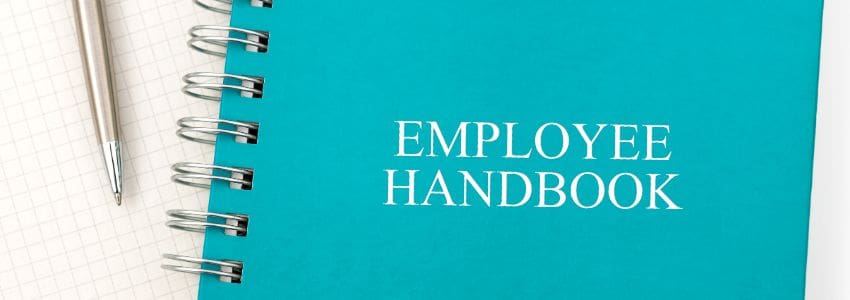Do I Have to Provide Employees Time Off to Vote?
Voting is a basic right in the United States, but do employers have to provide time off to allow employees to exercise that right? As with many answers in human resources, “It depends.”
Voting is a basic right in the United States, but do employers have to provide time off to allow employees to exercise that right? As with many answers in human resources, “It depends.”
Many organizations struggle to understand if they are following the Affordable Care Act (ACA) reporting standards correctly while others are not aware that they need to report in the first place. If you aren’t in compliance with ACA reporting requirements, each employee represents a potential fine. These fines can range from hundreds to millions of dollars—easy enough to bankrupt a smaller organization.
What steps can be taken to assist a company in developing an emergency response plan for a potential active shooter situation? HR Answer: Active shooter incidents are an unfortunate reality facing us all. Active shooter situations are unpredictable and can evolve quickly. It is important to provide your employees with the information needed to help prevent and prepare for the unthinkable. The first step in preparing for any emergency is to create an Emergency Action Plan: How to Respond – it is important that you act swiftly as an active shooter situation often evolves quickly: When contacting 911 provide as many details as possible, including: How to Interact with Law Enforcement on Scene: Law enforcement will be on the scene to stop the active shooter as quickly as possible. Any injured victims will not be helped until the shooter has been neutralized and the area is safe. The key to effective preparation for active shooter situations is to practice. It’s not enough to merely discuss the scenarios; employees should enact them, respond in real-time, and then debrief what went well and what could be done better. Even in practice situations, heart rates increase, and the natural fight, freeze, or flight response often takes over, overshadowing logical thinking and the application of learned tactics. Add this to your safety training program. For a more customized approach, visit our Active Shooter Training to learn more about how Clark Schaefer Strategic HR’s team can create a plan for your organization. In 2019, Clark Schaefer Strategic HR and MYCA Learning partnered together to support organizations in their search for essential training in accessible ways, resulting in the creation of our Active Shooter Preparation e-Learning Course. Geared toward preparing and protecting our communities should they face the unthinkable, this fifteen-minute course seeks to educate participants on how to be aware, how to assess their surroundings, and how to make a plan. 
HR Question:How to Prepare
Run Hide Fight
Call and Text 911 for Help
Practice
Learn more about Active Shooter Training!

HR Question:
We’ve decided to start conducting exit interviews but aren’t sure of the right questions to ask. What are some key questions to ask during an exit interview?
HR Answer:
Exit interviews are an important part of the employee life cycle. These interviews, conducted after an employee has formally turned in their resignation and is in their last few days of employment with your organization, allow you to get feedback to examine and potentially improve processes, expectations, and experiences within the company. While typically conducted with an employee who is leaving on their own terms for another opportunity, you can also conduct exit interviews with those employees who are relocating, retiring, or leaving for personal reasons.
Take the time to discuss topics such as pay and benefits, team culture and expectations, and reasons why someone may have felt prompted to search for opportunities elsewhere. The answers to these questions can help you develop strategies for your HR processes. Plus, this feedback is critical to reducing turnover and creating an environment your employees want to work for. You can’t fix what you don’t know, and you won’t know unless you ask. Preparing ahead of time can allow you to ask focused questions that will lead to the necessary answers.
The first step in conducting an effective exit interview is to ask yourself what you are hoping to accomplish by talking to the exiting employee. Are there areas or blind spots that they may be able to shed light on or provide additional insight into? This opportunity will allow you to gather feedback that current and remaining employees may be too hesitant to share.
You may have some suspicions as to the underlying reason(s) for employees’ departures, so this can be an opportunity to test out your hypotheses. For example, you may be concerned that your salary ranges are not up to date with your market and industry, and you are lagging behind your competitors. Or is the employee leaving because of a manager, supervisor, or co-worker? Do you want to look at your culture to see if it promotes teamwork, accountability, and appreciation?
Additionally, be prepared to see the organization through this individual’s lens. They may not have had the best experience, or perhaps they felt consistently frustrated by certain elements. As a result, be prepared to listen to their feedback (and potential negative approach) with an impartial ear and an eye looking for potential opportunities for improvement.
After determining the why, start creating questions that will get you the information you are seeking. Of course, there are many questions that you could ask, so we recommend you identify a set of questions that can be discussed in a reasonable amount of time. Here are some suggestions:
For additional areas to probe, Glassdoor provides more exit interview questions to consider.
After the exit interview, consider how you will use the data. Are you sharing it with the managers or leadership team, or are you checking the exit interview off your list and storing the information? Look for themes, especially if there is increasing turnover in one department or position. For example, are all of your customer service representatives leaving because they didn’t feel as though they were trained appropriately? Do your departing IT professionals complain about a lack of support from their manager? Use the data from exit interviews to create action plans to address issues and concerns.
Exit interviews can be used as a great tool to target turnover and retention issues. An effective exit interview is also valuable in pinpointing management and cultural challenges in an organization if the data is used appropriately. An alternate strategy is to open lines of communication with employees before they leave by conducting employee surveys or implementing stay interviews to identify and address issues before they choose to exit.
Thank you to Sheryl Fleming, MA, SHRM-SCP, for contributing to this HR Question of the Week.
Do you know why your employees choose to leave your organization? Exit interviews, while time-consuming, can be key tools for better understanding your company’s retention opportunities. Our team at Strategic HR can help you construct and conduct stay and exit interviews to learn more about why employees stay or go. Visit our Employee Relations page or Contact Us to learn how we can lend a hand in your employee retention efforts.

HR Question:
I have an employee who is not following company policy. I have given them several verbal warnings, and I know my next step is a written warning. How do I write and deliver a written warning?
HR Answer:
Disciplining employees can be uncomfortable. That’s why most companies have a Progressive Disciplinary Policy, clearly stating the steps employees need to take to modify unacceptable behavior and achieve the expectations of their role within the company. This can take the burden of deciding the next steps or consequences off of the manager and help them maintain an unbiased disciplinary process.
In order for the Progressive Disciplinary Policy to work as designed, it’s important that managers and supervisors document incidents appropriately. By following this policy and documenting incidents accordingly, companies can make a case for discipline or termination. However, without the appropriate documentation, taking disciplinary action can be potentially risky.
Most Progressive Disciplinary Policies start with a verbal warning. It’s important to make sure the employee is aware of what policy they are not following, as sometimes it’s simply a case of not being aware. It’s the “human” part of “human resources” – sometimes, employees make honest mistakes when they aren’t aware that they’re not in compliance. A verbal warning here can do the trick. However, sometimes it takes more than a verbal warning. That is when a written warning comes into play.
A written warning is a more formal step in the disciplinary process. A written warning should include:
It’s important to include factual information should the process or the disciplinary action ever be called into question. Additionally, any emotion or opinions should be kept out of the written warning and subsequent documentation.
Susan Heathfield, a writer for Balanced Careers, shares the following excellent examples of the right and wrong ways to document an attendance issue in The Importance of Documentation in Human Resources:
Wrong:
“Mark is usually late for work. Mark misses too much work.”
In this example, the documentation lacks specific examples, dates, and times, and includes the supervisor’s opinion, making a poor case against the employee and a strong case for discrimination or targeting by the supervisor.
Right:
“April 1: Mark called in sick and missed eight hours of work.”
“April 4: Mark arrived at work at 10 a.m., two hours late from his scheduled start time.”
“April 6: Mark scheduled a doctor’s appointment and then, stayed home to have a new furnace installed.”
“April 12: Mark called in sick and missed eight hours of work.”
See how the documentation relies on dates, times, and the amount of work missed? It also details the specific reasons the employee was missing work, rather than letting those facts be forgotten or muddled when recalled later.
Like most processes in business, there are best practices when it comes to delivering written warnings. First, it’s important to be consistent and timely. Avoid waiting days or weeks to write up an employee for an issue, as the impact of the warning (as well as the clarity of each person’s memory) can fade with time. Additionally, if you write up one employee for an attendance issue, be prepared to write up others who have the same issue. This consistency can help prevent claims of discrimination or favoritism.
At the end of the day, it’s important to provide feedback to your team members to help them succeed. If the employee has improved, be sure to acknowledge their effort. If the employee has not improved in the time allowed, continue to follow your Progressive Disciplinary Policy.
Special thanks to Sherri Hume, SHRM-CP and Samantha Kelly for contributing to this HR Question of the Week.
Employment recordkeeping does not rank high on the list of favorite human resources responsibilities, but it can get you into hot water if not done properly. Keeping appropriate disciplinary documentation is vital to proving your processes are compliant. Avoid the fines and minimize your stress level by having Strategic HR assist with your recordkeeping compliance. Visit our HR Compliance and Recordkeeping page to learn more about our services.

We’re celebrating the last full week of Black History month, and we want to keep the conversation going. How can our HR department cultivate a more inclusive environment beyond Black History Month?
While the month of February inspires us to celebrate the successes and recognize the struggles of Black and African American individuals across the US, this focus and spotlight do not have to (and we’d argue should not) be limited to four weeks out of the year. In “The Diversity and Inclusion Revolution,” one of the eight truths the Deloitte Review focuses on is that to create a diverse and welcoming workplace, organizations have to “perform a culture reset, not a tick-the-box program.” Celebrating the work and contributions of Black Americans during one month is not enough to build a diverse culture – rather, it can contribute to a continuous, inclusive facet of a larger and ongoing conversation; one that includes a wide range of abilities, identities, ethnicities, races, and genders.
Studies have shown that increasing the diversity of teams and leadership leads to increased innovation. Additionally, it’s no secret that diverse, inclusive, and equitable workplaces see higher than average financial performance as well. It is easy to see why cultivating an inclusive workplace is not only the right thing to do; it is also a smart business decision. So as you look for ways for HR to continue to nurture and grow a more inclusive environment beyond February, we offer the following suggestions.
After studying the most productive workplaces around the world, Gallup identified three requirements for a diverse and inclusive workplace culture:
By viewing diversity and inclusion through a broader lens as Gallup has, it opens the door for everyone to see how they can play a role. It’s naturally HR’s role to facilitate open conversations amongst employees, managers, and executives, including facilitating eye-opening and bridge-building conversations about how to understand and respect one another’s differences and the value that these differences can bring to our professional and personal lives.
In addition to having meaningful conversations that foster a respectful and inclusive environment, we recommend that you review your employee handbook to ensure that your policies and practices fully support diversity and inclusion in your organization. For example, do you have a clear path for employees to go to HR should they have concerns about the inclusivity of their workplace?
As your organization continues to foster a culture of inclusion and belonging for everyone, it’s important that your employees have the tools and common language to talk through related topics and issues together. When it comes to understanding diversity and how we can learn from one another, there is not a lack of potential training and development experiences. No matter where your employees are on this journey, it is important to continue to provide education and opportunities for growth. If you don’t feel that you are best equipped to educate employees on the subject matter, you may feel inclined to bring in a reputable speaker or training facilitator to optimize the experience.
There are many ways that HR can be purposeful in cultivating an inclusive culture. You can look for opportunities throughout the year to recognize important dates or impactful cultural events and help employees to celebrate them. For example, Juneteenth was recognized as a federal holiday beginning in 2021 – does your organization have plans to celebrate, recognize, or highlight the holiday? Can your employees take time off through established or floating holidays without utilizing their PTO in order to celebrate?
With the goal of creating an inclusive environment, consider providing forums and welcoming spaces for members of various affinity communities to exchange ideas, find mentorships, encourage a sense of belonging, and network. These groups could range from different ethnic and cultural backgrounds to LGBTQIA2S+, women, young and emerging professionals, and more. For example, look to GE’s Employee Resource Groups, which exist for the purpose of welcoming “all employees to learn, connect, advocate, and foster a sense of belonging.”
As the Deloitte Review emphasized, “match the inside and the outside.” Internal efforts to continue the conversations emphasized during Black History month or other diversity and inclusion initiatives can be more effective when matched with external efforts to make a difference in your local community. Look for outside opportunities through community action groups or nonprofit organizations. You could also consider paying employees for their time and efforts contributing to a more inclusive and welcoming society.
As we mentioned, there are countless ways that HR can cultivate an inclusive workplace, so we hope that these suggestions inspire even more ideas for how you can nurture diversity, equity, inclusion, and belonging in your organization.
Thank you to Mary Mitchell, MBA, SPHR, CHRS; Melinda Canino, MS; and Samantha Osborne Kelly for contributing to this edition of our HR Question of the Week.
Having an inclusive organizational culture that contributes to your organization’s overall success doesn’t happen by accident. It needs to be nurtured. Learn how we can help you to nurture your culture through our DEIB Consulting Services, or contact us today.

HR Question:
I keep receiving notices that I need to order new posters to meet federal employment poster requirements. Many of my employees aren’t in the office regularly and those that are don’t look at the posters or any of the compliance documents we are required to distribute. What’s the risk if we don’t post these posters or distribute the annual notifications to employees? Eliminating this task would save me and the company a lot of time and money.
HR Answer:
Even if you feel employees are not reviewing the posters, there’s still a compelling reason to provide them. The Department of Labor (DOL), the Equal Employment Opportunity Commission (EEOC), and the Employee Retirement Income Security Act (ERISA) require these employment postings and notices. And organizations that don’t comply with the requirements can be fined.
To save time, you can purchase a package of posters from a reputable vendor. This can be an easy, but potentially costly, way to fulfill the necessary poster requirements. However, if you would like a more cost-conscious solution, the DOL has a great option. Their Workplace Posters Overview provides a list of the necessary posters, along with links to downloadable posters in multiple languages.
Did you know that poster requirements can vary by company size and industry? If you’re not sure what federal posters your organization is required to provide, the DOL created the FirstStep Poster Advisor as an interactive, step-by-step guide to help you with poster compliance.
As many employers have shifted their workforce to a remote or hybrid work model, these employers have to shift their typical in-office practices to meet the Department of Labor’s requirements for their remote employees. To remain in compliance, the DOL requires employers to post labor posters electronically in a file that is accessible by everyone. Also, the file should not be password protected.
Employees must be able to find employment posters for their organization regardless of their work location. So if employers have a hybrid work model, a best practice is to have posters physically posted at the worksite while also including the electronic version of the posters on an accessible intranet.
If you are still asking yourself if it’s worth the hassle and expense, consider the potential penalties for non-compliance. In January 2022, the penalties for failure to post and/or provide notifications increased. Although some of the fines may not seem significant, they can add up quickly. According to the Federal Register, here is a sampling of the new maximum penalties for violating the following posting requirements:
For notifications, the Employee Retirement Income Security Act (ERISA) has significant fines for:
The Federal Register Poster Fine Reference provides details for all the fines you can incur for failure to comply.
In addition to federal posters, you may also be required to provide state posters. Here are links to posters required by Ohio, Kentucky, Indiana, and all other states. We recommend consulting with your legal counsel to ensure that you provide all of the posters that are appropriate for your organization.
As you can see, there could be several employment posters that your organization is required to post. So, if you think you are going to save time and money by not posting these materials, you may want to reconsider the potential fines and penalties that could result from non-compliance. Is it worth the risk?
Thank you to Patti Dunham, MBA, MA, SPHR, SHRM-SCP, Director of HR Solutions for contributing to this HR Question of the Week.
Recordkeeping is one of the more mundane tasks associated with Human Resources, but it is extremely important and can get you into hot water if not done properly. Learn how Clark Schaefer Strategic HR can help with your HR Compliance and Recordkeeping needs. Feel free to Contact Us with any specific questions you may have.
Our company is getting unemployment notices for people that have never worked here, or in some cases, people who are still employed. How should I handle this unemployment fraud?
The increasing level of unemployment fraud has been a source of frustration for states, employers, and individual employees. Various US congressional packages providing supplement unemployment relief have provided not only relief for the unemployed, but also an opportunity for criminals to seek ways to attempt to benefit. The US Department of Labor has reported “a surge in fraudulent unemployment claims filed by organized crime rings using stolen identities that were accessed or purchased from past data breaches.”
States that were already overwhelmed by the unexpectedly high levels of unemployment insurance (UI) claims are now having to pursue fraudulent claims to recover benefits that should not have been paid. Employers’ unemployment rates may increase as a result, and employees find themselves dealing with identity theft concerns.
In this article, we’ll share information and resources that employers and employees can use to understand who are the most likely victims and what to do should they suspect or fall victim to unemployment fraud.
There are some measures that employers can take to address unemployment fraud. HR professionals should be on alert to scrutinize any notices that they receive from state unemployment administrators to ensure their accuracy. If fraud is suspected, be sure to follow your state’s reporting instructions. Note that some states require both the employee and employer to file reports.
In addition, it’s important to inform your employees about the prevalence of identity theft and unemployment fraud scams that are occurring across the United States. As a proactive measure, consider sharing the information below regarding what employees can do to understand if they might be at risk for unemployment fraud and what to do if they become a victim.
Employees who have had a fraudulent unemployment claim filed in their name are recommended to refer to the Unemployment Insurance Fraud Consumer Protection Guide from the U.S. Department of Justice’s National Unemployment Insurance Fraud Task Force. This guide explains:
According to the UI Fraud Consumer Protection Guide, if a UI claim has been filed in your name that you did not file, you should:
Additionally, employees are encouraged to go to annualcreditreport.com to ensure they have not been a victim of identity theft. Employees may also want to place a free one-year freeze on their credit by contacting any one of the three nationwide credit reporting bureaus listed below. When one bureau is notified, they must notify the other two.
With the rise of unemployment fraud cases using information that was obtained from previous data breaches, it’s important that employers and employees implement good cybersecurity practices. This presents an opportune moment to review how your organization protects personally identifiable information (PII), such as name, address, birth date, social security number, etc. Do you encourage employees to create unique and strong passwords? Do you require two-factor authentication or alternate solutions to increase your cybersecurity? Whatever safety measures you have in place, we recommend that you continue to review them to ensure that you are covering all of the necessary areas and that your employees are following cybersecurity practices consistently.
Special thanks to Cathleen Snyder, SPHR, SHRM-SCP, and Melinda Canino for contributing to this edition of our HR Question of the Week.
Still have questions? Contact our HR experts! Give us a call at 513.697.9855 or email us at Info@strategicHRinc.com.

We’ve received a lot of resumes recently – some for positions we’ve posted and some unsolicited. Do we have to keep all these resumes, and if so, how long do we need to retain resumes and applications?
Best practice is to retain all job applications and resumes – solicited or unsolicited – for a minimum of two years from the date of the hiring decision. Although most records only need to be retained for one year, there are a few reasons why retaining them for two years can provide greater security. Employers are responsible for following all federal laws under which they are covered, as well as any contractual requirements (e.g. union contracts) for all record retention.
Requires employers to keep various employment records, including job applications, for one year from the date the application was received.
Requires employers to retain employment applications for one year. There is language, however, that indicates if you are aware the applicant is over age 40, you should retain it for as long as two years.
Requires employers to retain job applications and documents for one year. Some variation exists based upon whether or not the applications are solicited or unsolicited, but the maximum retention is two years.
Record retention as related to government contractors includes the retention of applications for two years. As of January 2025, however, that Executive Order is no longer technically “in effect”. Until we fully know the impact of applicant record retention, it is recommended that you stay with the two year retention period. Federal contracts formerly subject to OFCCP’s requirements on recordkeeping are still subject to overlapping requirements from Title VII and EEOC.
Although this seems fairly straightforward, heed the word of caution because many exceptions exist. Consider these other situations impacting the retention of resumes and applications.
For discrimination charges or lawsuits filed against your organization, all relevant records must be retained until the matter is resolved. When a charge is not resolved after an investigation, additional periods for recordkeeping apply. It can get tricky, so err on the safe side and consult with HR and/or counsel.
While most states have the same requirements as federal regulations, some states have unique recordkeeping requirements for applicants. Review your state requirements.
You are not obligated to store unsolicited resumes sent to your organization. When you review an unsolicited resume or application, however, those items are often then seen as having been considered for employment. In that case, you’re obliged to retain it with other solicited applications in response to an ad or post.
If you have a resume from a previous search and decide to consider it for a new position down the road, maintain that resume for the time required based on the last viewing of the document for the more recent position.
When considering record retention, identify all documents related to the application you need to keep. Not only do you need to keep the resume or application, you must also retain supporting applicant documentation. This would include items such as:
Maintaining applicant records is important for compliance with anti-discrimination laws, potential legal challenges, and ensuring a fair and equitable hiring process. Regularly review and update your record retention policies. This review will ensure compliance with evolving laws and best practices. And finally, remember to carefully consider how you dispose of applications. When you’re ready to “toss” those applications with confidential data, shred it or safely delete the electronic data.
Recordkeeping can be a daunting task, especially when you are trying to clean out old records and maintain the pertinent ones to remain compliant. Clark Schaefer Strategic HR understands your frustration and has many tried-and-trusted tips on recordkeeping. Visit our HR Compliance & Recordkeeping Services to learn more about ways we can help you to get your employment records in order.

HR Question:
Our HR team is exploring ways we can support employee well-being in addition to offering an EAP. What should we consider in our approach?
HR Answer:
While many organizations have implemented an Employee Assistance Program (EAP) as an important way to support their employees’ mental health, that is only one component of well-being. There are many ways HR can play a direct role in supporting employees’ overall well-being. In this article, we’ll discuss what well-being is, how it impacts individuals and organizations, and offer specific examples of how you can support employee well-being in your organization.
Well-being is the holistic state of an individual’s physical, mental, social, spiritual, and financial health as well as a sense of career and community. It can include things such as work-life balance, stress, job satisfaction, and financial confidence, just to name a few. Essentially, it’s what makes humans human.
A common misconception is that wellness and well-being are the same thing, however, they are not. Wellness is one component of a person’s overall health, while well-being encompasses all aspects of a person’s health factoring in mind, body, and spirit.
In addition to promoting the fundamental principle of valuing your employees, there is evidence demonstrating the advantages of enhancing employee well-being. Employers that focus on their employees’ overall well-being see the results not only directly with their employees, but in business outcomes.
According to research from the McKinsey Health Institute and the World Economic Forum, employers that take steps to nurture employee health and well-being experience decreased turnover and absenteeism, heightened employee engagement, increased profitability, elevated productivity, enhanced safety, and lower healthcare costs.
The results are clear – physical, mental, social, and spiritual well-being are inextricably linked to work, productivity, and performance. Investing in employee health and well-being can be seen as both an ethical obligation and a smart strategic business decision.
There are a number of resources that employers can lean into to enhance their employees’ overall health. Some ideas on how you can support your team include:
Many employers encourage physical fitness and offer ways to stay physically fit (i.e., company-wide step challenges, company-sponsored 5K teams, etc.). However, it’s important to think beyond that to promote other areas such as mental, social, and financial health. If you’re not sure what’s important to your team, consider conducting an employee pulse survey to help you make informed decisions on what your employees will value most.
Well-being is not a one-size-fits-all scenario. The Great Place to Work Well Being Survey Report provides key insights looking at differences in well-being across different demographic groups, including gender, age, ethnicity, and job level. You may find that it could be beneficial to offer extra support for some subsets of your staff.
Why recreate the wheel when you don’t need to? Check out these examples of well-being programs being offered by the Fortune 100 Best Companies to Work For. Even if you don’t choose to offer the same programs, learning what is working well for other companies can sometimes inspire ideas that will work for your organization.
How do your current benefits support well-being? If this is an opportunity for improvement, consider adding options such as paid time off, flexible work arrangements, employee assistance programs, financial advisory services, and well-being initiatives. Of course, offering them is not enough, it is also critical to have a solid HR communication plan in place to ensure employees are aware of these benefits and to eliminate any hurdles to using them.
Offer programs and opportunities that build camaraderie, encourage acts of kindness and connection, encourage communication, and workplace civility. Many organizations have found company-supported community involvement activities to be a great way for their teams to not only feel good about doing good in their communities, but it also allows for them to spend meaningful time together. Consider offering volunteer time off (VTO) to alleviate any financial barriers to participation.
Remember there are actions you can take that don’t need to break the bank. Look for low and no-cost ways to support employee well-being. For example, you can support healthy work-life balance with a simple, yet significant statement in your email signature, such as “Please know we work flexibly in our organization. If you receive this message outside of your normal work hours, no response is expected until your next planned work day.” This sends a powerful message about how your organization values work-life balance.
The costs of employee well-being are too high not to pay attention. Regardless of the action your organization chooses to take, it’s important to remember that work and personal life are not mutually exclusive. Work life influences home life and vice versa, as much as we wish it would not. Ignoring or not supporting one or the other has serious potential consequences. If you’re not sure about the best ways to leverage your financial and time resources, ask your employees. You may learn that they are willing to take cuts in pay to continue to work from home or have other well-being benefits that positively impact them, their family, and/or their lives outside of work. We have found that every effort you make to help better the lives of your employees ultimately comes back to better your organization as well.
Thank you to Patti Dunham, MBA, MA, SPHR, SHRM-SCP, Director of Business Strategy & Quality and Julie Johnson, PHR, SHRM-CP, Senior HR Business Strategist for contributing to this HR Question of the Week.
Investing in employee well-being is not just an ethical obligation, but a strategic business decision that can lead to increased productivity, engagement, and overall success. Take advantage of our comprehensive Health, Safety, and Security services to support your team’s holistic well-being and create a thriving workplace. Contact us to learn more about how we can help you prioritize employee health and well-being.
Want to improve your employee well-being?

HR Question:
Our company has locations in multiple states, including Michigan, where there’s been a recent change to the Earned Sick Time Act. Can you explain what’s changed and what we, as an employer, need to do to comply with Michigan’s Earned Sick Time Act?
HR Answer:
Yes, this has been an evolving issue. On February 21, 2025, Michigan Governor Gretchen Whitmer signed House Bill 4002 into law, amending the state’s Earned Sick Time Act (ESTA). These changes have significant implications for employers operating within Michigan as they include revisions to accrual rates, carryover rules, and compliance deadlines. Below we’ll outline what Michigan employers should consider moving forward to support their compliance.
House Bill 4002 introduces several critical modifications to the ESTA, including the following four key components:
Employees accrue one hour of paid earned sick time for every 30 hours worked, up to a maximum usage of 40 hours per year. Employers have the option to provide 40 hours of paid sick time at the beginning of the year, allowing immediate use.
Employees accrue one hour of paid earned sick time for every 30 hours worked, with a maximum usage of 72 hours annually. Alternatively, employers can frontload 72 hours of paid sick time at the start of the year.
Employees may carry over up to 40 hours of unused earned sick time to the following year.
Employees can carry over up to 72 hours of unused earned sick time annually.
Employers choosing to frontload the full allotment of sick time at the year’s start are not required to track accruals or allow carryover of unused time.
The amendments took immediate effect on February 21, 2025. However, small employers with 10 or fewer employees have until October 1, 2025, to comply with the paid earned sick time provisions.
Employers in Michigan must assess and adjust their policies to align with the revised ESTA requirements. As you work to support your compliance, consider the following:
To navigate these changes successfully, we encourage employers to:
By proactively addressing these areas, employers can align with Michigan’s updated Earned Sick Time Act, thereby supporting their employees’ well-being and compliance.
Special thanks to our CSH colleague, Luke Downing, Shareholder, for sharing his expertise in this HR Question of the Week.
It can be overwhelming to stay on top of constantly changing employment regulations, but you don’t have to do it alone. The HR experts at Clark Schaefer Strategic HR are prepared to support all of your HR Compliance needs. For example, we can create, review, or revise your employee handbook to help you communicate important changes to your employees while also supporting your compliance. Interested? Request a free handbook consultation.
Need help with your employee handbook?

It’s no secret that the work environment has changed in recent years. We’ve experienced a pandemic, a labor shortage, inflation, and a contentious election, just to name a few. The recent Mercer Global Talent Trends found that more than 80% of employees are at risk of burnout. This was found to be stemming from excessive workload, financial stressors, and exhaustion.
It has become more important than ever that employers listen to and understand the motivations of their employees in order to best attract and retain them. Many employees have made changes that better support family life, financial security, and their lifestyle through flexible work situations, including flexible work options. Many are realizing that work-life balance is not a “nice to have,” but rather it is a necessity.
This and other research also found that the ability to enjoy a work-life balance ranked highly as a reason employees both join and stay at a company.
Each person has his or her own idea of work-life balance or work-life integration, which is another term that some use for the concept of the give and take, tug and pull between work and personal life. So how can employers meet the diverse needs and desires of their employees and achieve work-life balance, particularly if it means something different to each person? Here are three potential solutions:
To be competitive in today’s market, consider offering flexibility in where and when work is performed. Although this contradicts many headlines of CEOs and leaders demanding employees return to the office, many organizations are finding a hybrid approach can meet both the organization’s and the employee’s needs.
A hybrid work arrangement can present unique challenges to individual and team productivity, collaboration, and success. We recommend that employers:
Employers should also ensure that their policies and practices are updated to align with their efforts of supporting employee work-life balance. For example, if you offer hybrid work situations, you should formalize this through a Hybrid Work Policy that both supports the need for employees’ work-life balance and meets the demands of the business.
Offering a hybrid option allows employees and their employers to view the work-life balance holistically and offers insight into how employers can build trust and empowerment within their employee groups while still maintaining fair expectations of employees. By offering the option of a hybrid work environment, employees can reduce the high levels of stress they’ve carried in the past around personal and family obligations and seek a better balance without long commutes.
Personal time is extremely important for a healthy balance. We are able to be more productive at work when we infuse our daily schedules with some downtime. However, working where we live can lead to blurred lines between work and homelife causing some to find it hard to turn off the workday knowing that there might be one more email/text/phone call that awaits their attention. Employees can start to feel that they need to be available 24/7… falling down the slippery slope that leads to burnout.
Employers can help employees to protect their “me time” by fostering a culture that supports that behavior. For example, it can help to set expectations and encourage employees to “turn off work” by a certain time each day. If an email request happens to be sent during a time when an employee should be “off duty,” instill the habit of noting when something isn’t urgent and can wait until their next workday. This can help employees to set healthy boundaries between work and personal life.
Encourage team members to set time aside each day by doing something for them, whether it’s for 10 minutes or for an hour. The goal is for this time to be set aside for something that truly calms their mind. It could be anything from exercising, meditating, reading, watching TV, etc.
Another way to encourage employees to protect their time is by maintaining a sense of structure throughout the day, whether employees are virtual, in-person, or hybrid. Be sure that you are continuing to host regular staff meetings, group meetings, and social gatherings to make time for some fun together as well.
Help team members stay in the loop through weekly “huddles” or calls to keep everyone accountable and connected. Regular one-on-one meetings allow managers and employees to continue to touch base and uphold the objectives and goals set for the year.
Evaluate processes already in place. Don’t look for places to cut corners, but rather look for steps in the process that may not be necessary to complete the same high-quality work. It’s easy to get into the daily habit of following processes when there may in fact be an easier way.
Whether you call it work-life balance or work-life integration, employers who embrace it will not only thrive in terms of attracting, engaging, and keeping valuable employees, they will help to prevent burnout, increase productivity across the board, and ultimately become employers of choice with a reputation for supporting work-life balance. If an employer chooses to ignore the work-life balance expectations of the current workforce, they run the double risk of losing great employees who leave for opportunities that better meet their needs and the impossible task of attracting new talent into a less-than-desirable work environment.
Thank you to Cathleen Snyder, SPHR, SHRM-SCP, Director of Training & Development, and Cassie Whitehouse, M.Ed. for sharing their expertise on work-life balance.
Creating an organizational culture that is supportive of the diverse needs of employees is imperative to attracting and retaining the talent you need – not to mention critical to your bottom line. Clark Schaefer Strategic HR can support your culture strategy through employee surveys, establishing remote and hybrid work policies, identifying retention solutions, developing employee recognition programs, and more. Contact us today!

HR Audit. No one likes to hear that word – audit. Review. Evaluation. Analysis. No matter what word you use, negative thoughts start to fill your head. We challenge you, however, to look at this event as a chance to review and renew. A properly conducted HR Audit can (and should) be a welcome review of your human resources function, helping you to remain the best in class or improve the function and services you provide. As with many things, how you prepare for an HR Audit will determine its effectiveness.
An HR Audit involves an organized and structured review of your organization’s human resources practices. By reviewing policies, procedures, legal requirements, and processes, the HR Audit enhances the overall efficiency, compliance, and effectiveness of an organization’s HR practices – ensuring these are on track to focus your employees’ efforts in meeting your organization’s goals.
When conducted properly, the audit will reveal departmental strengths and shed light on gaps and areas for improvement. A skilled auditor will guide you through the findings and offer course-correcting recommendations.
Some reasons to conduct an HR Audit can be to:
How do you ensure your HR Audit is a constructive event resulting in improvements rather than demerits? The key to an effective audit is for it to be clearly defined and have the process work to your advantage. When selecting an auditor to review your human resources function, we recommend securing an individual or team that will work with you to make certain that you get what you want out of the review. To do that, interview those you are considering to take on the auditor role to verify that they understand your culture and your industry. Consider the following as you prepare for your HR Audit:
What is the goal of your HR Audit? Is it a compliance-driven review? Is it a review of process and best practice? Some employers are confident that their compliance is on point and prefer a review of processes and best practices in functional activities such as recruiting, payroll processing, or even benefits administration. Others are solely concerned about compliance and keeping up with the myriad of changing legal requirements. Determine your desired outcome before you begin and tailor the review to meet those expectations on the front end.
Are you reviewing all of the functional aspects of HR or just one or two key areas? For example, some employers request an in-depth review of a specific area, such as their recruiting function, rather than a review of all areas. The audit would consist of an evaluation of both compliance and best practices in the recruiting process to identify areas of potential improvement surrounding their recruiting efforts.
Others prefer to have a review of all of the HR areas. In this type of audit, all functional areas under analysis would include recruiting and employment, recordkeeping, policy development, compensation, benefits, health and safety, communications, and payroll. These reviews typically involve a focus on compliance in these areas, but they also evaluate processes and procedures for each of the areas. The organizational effectiveness of the HR function can also be examined to ensure the department is meeting the needs of its internal customers.
Will you only include human resources staff who regularly touch the function, or will you include your internal customers as well? For example, if you are doing a review of your recruiting and employment process, who will you include? Your HR recruiting staff is an obvious choice, but what about the hiring managers in the functional areas and/or those involved in orientation and onboarding?
The report provided at the end of the audit will include items that should be improved. Findings may include general compliance or regulatory items that need to be addressed or even a process improvement recommendation. Most audits help you to determine the high-priority items versus those of lower priority based on compliance concerns.
Once the action items are identified, it will be up to you and your team to prioritize the items and determine who will be responsible for implementing the changes. Determine how you will approach the “fixes” so expectations are clear at the onset. It’s unlikely for everything to be addressed immediately, so you’ll want to align on expected timelines.
To ease concerns ahead of time, be sure to prepare for an HR Audit with a well-designed plan and clear expectations. As experienced HR auditors ourselves, we encourage you to work cooperatively with your chosen auditor to make sure you are getting what you want out of the review so positive outcomes can be reached.
Thank you to Lorrie Diaz, MS, PHR, Senior HR Business Advisor, and Patti Dunham, MBA, MA, SPHR, SHRM-SCP, Director of Business Strategy and Quality for sharing their expertise on HR Audits.
Clark Schaefer Strategic HR knows that keeping abreast of HR Compliance issues can be daunting, especially when the laws keep changing. We can conduct an HR Audit to identify trouble spots in your HR function and help to mitigate compliance issues. If you would like a customized quote, you can Request an HR Audit Quote.
Concerned about your HR function?
Don’t worry! Our HR experts can conduct an HR Audit to put your mind at ease.

HR Question:
What is an EEO-1 Report and how do I know if I am required to file one?
HR Answer:
As defined by the Equal Employment Opportunity Commission (EEOC), the EEO-1 Report is an annual mandatory data collection of demographic workforce data, such as race/ethnicity, gender, and job categories. The window for the 2022 data collection will open in mid-July 2023.
Great question to start with! Not every employer is required to file an EEO-1 report. That being said, there are a few questions to ask yourself to understand if you need to file:
If you answered “yes” to any of the above questions, then you need to file an EEO-1 report annually. Employers also must file if the organization is any of the following:
There are some organizations that are exempt, such as State and local governments, public primary and secondary school systems, institutions of higher education, American Indian or Alaska Native tribes, and tax-exempt private membership clubs other than labor organizations.
It always pays to be prepared! Before you start gathering the data yourself, here are a few tips to help you be better prepared to file your EEO-1 Report.
First, research and understand the requirements for filing. While these requirements don’t change frequently, it’s best practice to double-check the most up-to-date requirements, which can be found on the EEOC‘s website. If you have additional questions, the Message Center provides an outlet to reach out to the EEOC for guidance. This page will open in mid-July as the window for 2022 data collection opens.
Gathering the data yourself can be difficult. While this may not be an immediate solution, investing in an HRIS or a payroll system can be a great resource. Some software includes an HR solution that provides an efficient and accurate way to access the employee data needed to complete the report accurately.
If you do not have an HRIS or payroll software solution, you can have each employee complete an EEO Self-Identification Form. This form is voluntary, however; if an employee declines to identify, the federal government requires you to determine this information by visual survey and/or other available information.
If your company has never filed an EEO-1 Report before, let’s start with the basics – creating an online account. Visit the EEOC Data page, select “Create an Account,” then log in to the EEO-1 Component 1. At that point, new users can link their individual user account to a company record by selecting “Add Company to List” on the Your Company List page and entering your company’s EIN. After you register, you will receive your Company ID and PIN.
You will need the following information to complete the report:
Once the report is finished, it needs to be certified and submitted. Don’t forget to click the “certify report” button; otherwise, the EEOC will not receive your report.
Thank you to Sherri Hume, SHRM-CP, HR Business Advisor, for contributing to this edition of our HR Question of the Week.
Recordkeeping is one of the more mundane tasks associated with Human Resources, but it is extremely important and can get you into hot water (i.e., incurring fines) if not done properly. Keeping the right files easily accessible and up-to-date is vital. Need some help? Visit our HR Compliance & Recordkeeping page to learn more.
An employee has indicated that she has bedbugs in her apartment building. What responsibility do we have as an employer towards our other employees?

HR Question:
We had a fabulous individual working for us through a temporary agency. We decided to hire the individual and ran them through our process, including conducting a background check. The results were shocking – we thought the temporary agency had already verified their background. How should I handle background checks for temporary employees going forward to ensure this doesn’t happen again?
HR Answer:
Many companies treat temporary employees differently when it comes to background checks and only realize it when it’s too late – when they try to hire the individual. The staffing company said they ran a “background check” before they placed the individual with you. However, when you compare the results of your own verification versus the staffing company’s, it hits you: If you had run your own background check first, instead of relying on the staffing company’s, you would never have considered the individual in the first place. So, now what do you do?
Unfortunately, this situation is all too common. Many employers allow temporary workers into their organization without knowing anything about the “background check” the staffing company performed before those individuals started working for their organization.
Did they only run a database search? Maybe they just entered the employee’s name in a local county records website or simply Googled the person. Or, even more disturbing, maybe they didn’t research the person’s background at all!
The term “background check” is very broad. When working with temporary employees, it is best practice to confirm that your staffing company is running quality courthouse background research before you let them place temporary personnel with your organization.
Managing the hiring process can be tricky. If you currently run pre-employment screenings before you bring someone on board, you already understand the importance of this verification process. To help protect your organization and your employees, follow the best practice of having employees from staffing companies meet the same expectations as direct hires.
A special thank you to Matt Messersmith, President/CEO, Signet Screening, and Amy Turner, Senior HR Business Advisor, for sharing their expertise in this HR Question of the Week.
Does the thought of hiring someone make your head spin? Full-time, temporary, temp-to-perm, intern…pre-employment assessments, references, background checks, drug screens – we can help you manage it all. Whether you need a complete recruitment solution or just help with pieces of the process, Clark Schaefer Strategic HR can assist you. Visit our Recruitment page to learn how we can provide you with top-notch recruitment solutions.
Need help with some or all of your recruitment process?

HR Question:
Why do I need an Employee Handbook? Are they required?
HR Answer:
While it is not a requirement to have an employee handbook, having one can be an effective tool for you to communicate expectations throughout your organization. The employee handbook can be a quick reference for commonly asked questions such as “When am I eligible for vacation?” or “How do I call in sick?” Beyond communication with employees, a well-crafted employee handbook can provide many benefits to your organization.
For new employees, the handbook serves as an important introduction to your company. In addition to explaining work rules and expectations, it introduces new employees to the vision, values, and mission of your organization. An employee handbook can be a roadmap during orientation to help new employees get onboarded more quickly and reduce misunderstandings.
Your employee handbook is also an introduction to your company culture. The way that policies are phrased – such as expected working hours and location(s), ways to submit PTO requests or time off, how to communicate family/personal crises should they come up, etc. – can speak to your organization’s flexibility, inclusiveness, open-mindedness, or work-life balance expectations. Drafting policies that promote and reward desired behaviors (and perhaps, even explain the reasons behind them) can help nurture a healthy workplace culture.
The employee handbook serves as a legal statement of policy on behalf of the employer. When signed by both the employee and employer, it can stand as evidence that not only were expectations communicated, but they were also agreed to as a requirement of working within the organization. For example, including anti-discrimination and anti-harassment policies, as well as bystander reporting requirements and complaint filing procedures, can provide guidance and protection for both employees and the employer should difficult situations arise.
An employee handbook can also clearly communicate the organization’s right to end employment based on performance, reorganization, financial downturn, or any other reason (commonly known as an “employment-at-will” statement). Without this, an employee may claim that an employment contract was made through other means of communication. Having a clear at-will-employment statement in the handbook may provide some protection from these types of claims.
It is critical for your handbook to be constructed properly for it to provide protection versus risk. Therefore, we highly recommend having your legal counsel review your handbook to ensure that it provides optimal protection for your organization.
Your employee handbook can be used to meet the requirements of federal, state, and local laws. For example, federal law requires employers who are covered by the Family Medical Leave Act (FMLA) to inform employees of their FMLA rights. If FMLA applies to your organization, an employee handbook provides an opportunity to inform employees of their rights, your internal processes, and answer any frequently asked questions that come up when addressing FMLA needs.
In addition, businesses that have employees across states, cities, and towns may have to comply with the laws in those work locations. Creating state handbook policy addendums for different states or jurisdictions can help the organization in communicating these requirements.
An employee handbook formalizes the company’s policies on workplace matters, ideally encouraging a fair and consistent workplace. Managers can refer back to the handbook as a guide when it comes to discipline, internal processes, expectations, or review policies to ensure consistent treatment for each employee.
Including policies such as a progressive disciplinary policy can inform managers and employees of the company’s expectations on how disciplinary issues will be handled, providing a sense of trust and reducing confusion in challenging situations.
Maintaining company policies in an employee handbook provides an opportunity to examine your policies for contradictory, illegal, or outdated rules. Annual revisions to your handbook will encourage you to identify policy changes that should be made based on company goals, new laws, court rulings, and industry standards.
As with any HR policy revision, it is important to communicate the changes to employees. As a best practice, many organizations require employee signatures verifying that they have received the revised handbook.
An employee handbook is significant for what it includes, as well as what it does not include. It should provide policy direction, flexibility when necessary, and a clear outline of practices that your organization can follow consistently.
It is also essential not to include things in the handbook that you are NOT doing. For example, if your handbook indicates that you plan to review employee performance every year, but you haven’t reviewed anyone in over five years, then it would be important to review and revise that statement to reflect the practices you actually follow.
Be cautious of handbook templates or copying another organization’s handbook. Avoid including policies that do not apply to your company such as policies for companies with over 50 employees because you think you might be over 50 employees within the next 3 years. Also, make sure you have your attorney review your handbook to ensure they are comfortable defending you, should something ever go to court, based on what is written in the handbook.
Wondering if you’re up to date on policy trends? Learn more about the Top Employee Handbook Policies to Include this Year.
Thank you to Colleen Mahoney, PHR, HR Business Advisor, for contributing to this week’s HR Question of the Week.
Don’t have a handbook and not sure where to begin? Concerned that your current handbook is outdated? Don’t worry. Clark Schaefer Strategic HR can help you to create or revise your handbook to ensure that it serves as a meaningful communication tool helping to protect your employees and your business. To learn more, request a free handbook consultation today.

HR Question:
Now that Issue 2, legalizing recreational marijuana in Ohio, has passed, what does it mean for my employment policies? Does this mean my drug-free workplace policies are no longer valid? How should I navigate marijuana in the workplace?
HR Answer:
Medical marijuana was legalized in Ohio in September 2016, and retail sales began in January 2019, when the first four licensed dispensaries opened for business. On December 7, 2023, Issue 2, decriminalizing non-medical marijuana use, will go into effect – opening the door for adults 21 and over to legally possess, purchase, and share up to 2.5 ounces of cannabis. As reported by WCPO, the law isn’t without its limits, however, as it prohibits:
Additionally, landlords and employers can still prohibit marijuana use based on their policies. So, what do employers need to consider as they navigate this new law?
First and foremost, it’s up to the organization to decide if the use of the drug will be tolerated or affect current drug testing policies. The employer would potentially need to reevaluate, for example, whether or not there is an acceptable amount of marijuana that could be found in someone’s drug test, and how that amount may impact the decision of whether or not to terminate an employee (or not to hire). Additionally, it’s necessary to consider how to ensure current employees aren’t using marijuana at work or before they come in.
Depending on how your organization wants to proceed, there are a few paths to take:
What about medical marijuana? In outlining employers’ rights, Ohio’s Revised Code 3796.28 states that an employee has no specific protections, which could be interpreted that you do not have to accommodate an employee’s need to use the substance. An employer has the right to not hire an employee based on medical marijuana use, possession, or distribution. At this time, the law does not allow a cause of action against an employer if an employee believes he or she was discriminated against due to medical marijuana use. An employer is allowed to have a zero-tolerance drug-free policy in place, with or without special accommodations for those who use medical marijuana.
No, this does not mean your drug-free workplace policies are no longer valid. But what this does mean is that this is a key opportunity to review any drug-related policies to make sure they are up-to-date, accurate, and reflect the needs of your organization. And, as always, consult your legal counsel to ensure that you’re avoiding discriminatory actions and complying with federal, state, and local laws. If you make any changes, be sure to distribute and explain the policy and have employees sign off on the acknowledgment.
Thank you to Alisa Fedders, MA, SPHR, and Samantha Kelly for contributing to this edition of our HR Question of the Week.
Do you struggle with doing what is right for your company and right for your employees when it comes to creating a Drug-Free Workplace? Sometimes the “right” solution isn’t always easily identified. Strategic HR understands your dilemma of being between a rock and a hard place. We can provide you with best practices, policies, and training when it comes to creating a Drug-Free Workplace or any needs concerning the health and well-being of your workforce. Please visit our Health, Safety, & Security page for more information on any of these services.
Clark Schaefer Strategic HR
10856 Reed Hartman Hwy
Suite 225
Cincinnati, OH 45242

Clark Schaefer Strategic HR is recognized by SHRM to offer Professional Development Credits (PDCs) for SHRM-CP® or SHRM-SCP® recertification activities.
The information provided on this website does not, and is not intended to, constitute legal advice; instead, all information, content, and materials available on this site are for general informational purposes only. Readers of this website should contact their attorney to obtain advice about their particular situation and relevant jurisdiction. This website contains links to other third-party websites. These links are only for the convenience of the reader, user or browser; Strategic HR does not recommend or endorse the contents of the third-party sites.
